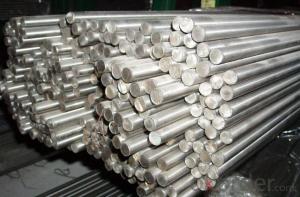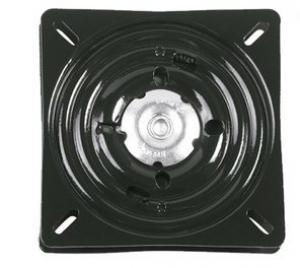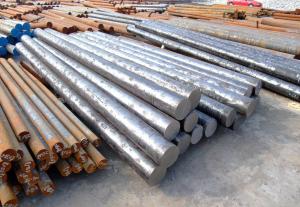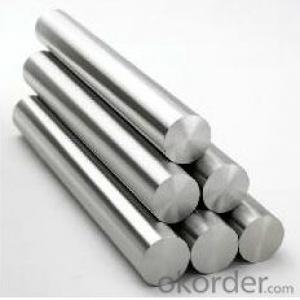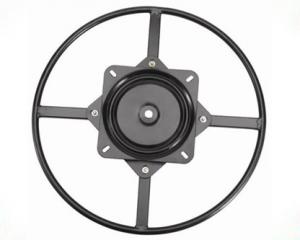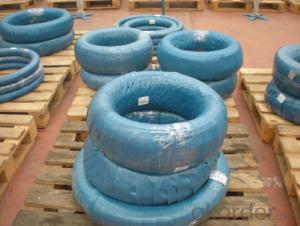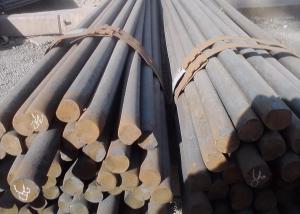ASTM 1065 Alloy Cold Drawn Steel Round Bar
- Loading Port:
- Tianjin
- Payment Terms:
- TT OR LC
- Min Order Qty:
- 25 m.t.
- Supply Capability:
- 50000 m.t./month
OKorder Service Pledge
OKorder Financial Service
You Might Also Like
Item specifice
ASTM 1065 Alloy Cold Drawn Steel Round Bar
Product Description:
1. Sizes: Diameter: 16mm-300mm; Length: 6m, 9m, 12m
2. Grade: ASTM 1065
3. Invoicing on theoretical weight or actual weight as customer’s request
4. Shape: Round bar, solid bar of steel with circular section
5. Technique: Hot rolled, forged, cold rolled
Specifications:
Material | ASTM 1065 | Round bar | Dia(mm) | Max 700 |
Process | EAF + LF + VD + Forged + Heat Treatment (optional) | Length (mm) | Max 12000 | |
Heat treatment | Normalized / Annealed / Quenched / tempered | Plate bar | Thickness(mm) | Max 200 |
Delivery condition | Hot forged +Rough machined (black surface after Q/T)+ Turned (optional) | Width(mm) | Max 3000 | |
Test | Ultrasonic test according to SEP 1921-84 D/d | Length (mm) | Max 12000 |
Chemical Composition:
Standards: ASTM,JIS,GB,EN(DIN,BS,NF)
Grade | C | Si | Mn | Cr | Ni | Cu |
ASTM 1065 | 0.62~0.70 | 0.17~0.37 | 0.50~0.80 | ≤0.25 | ≤0.30 | ≤0.25 |
Delivery Condition:
EAF+LF+VD+(ESR), rolled / forged, annealed / Q+T, black/peeled/turned, UT tested
Application:
Carbon steel rod applies to chemical industry, shipping industry,manufacturing industry, construction, decorate industry, electric power, pump shafts, sanitary wares, furniture handles, boiler, high temperature resistant,low temperature resistant,corrosion resistant
Sales Information:
Material | High Quality Carbon Structural Steel ASTM 1065 |
Size | Diameter:10-700mm Length:6000mm-12000mm |
Origin place | Made In China |
Delivery Condition | Hot rolled, cold drawn, forged |
Surface require | Black, grinding, bright, polish |
Heat treatment | Quenched, Tempered, annealed |
Packing | Seaworthy packing ,wooden case ,carton,woven bag or at client's requires |
Delivery time | According to order’s quantity. |
Trade Term | EXW,FOB,CIF |
Payments | T/T or L/C at sight |
Port | China main Port, such as shanghai, Dalian, Shenzhen port. |
MOQ | 25 Metric Ton |
Product show:
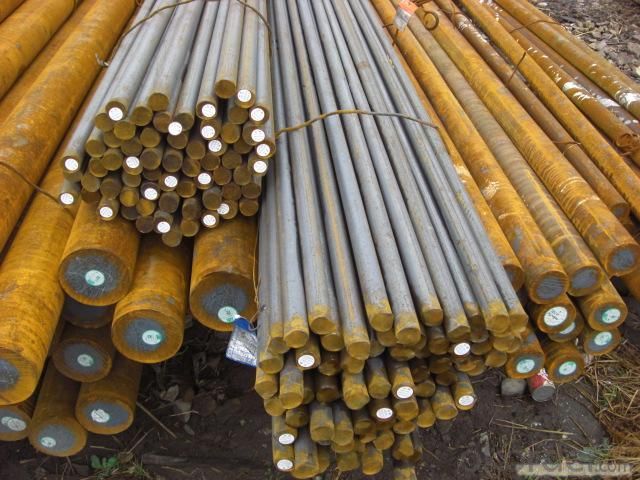
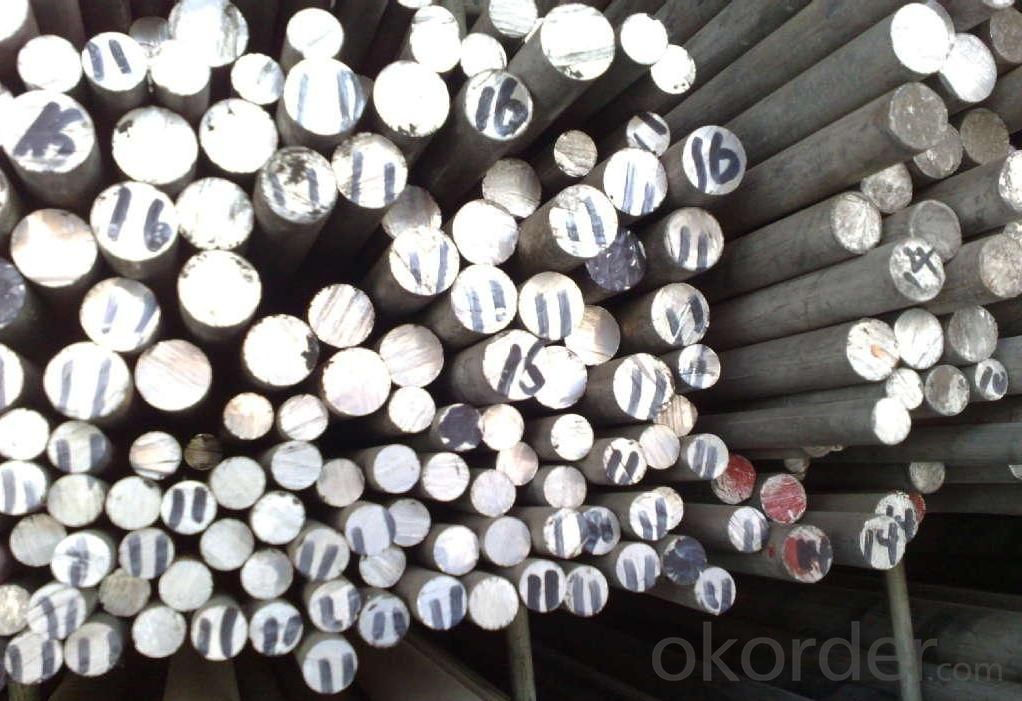
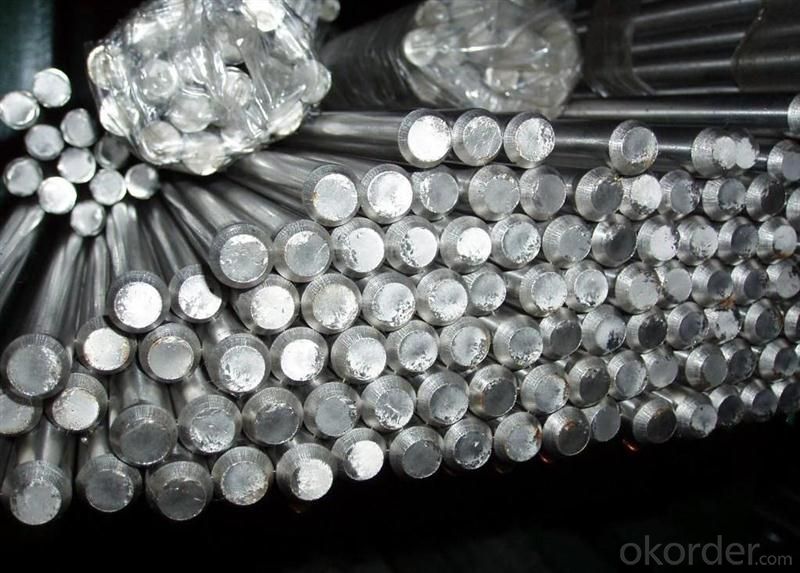
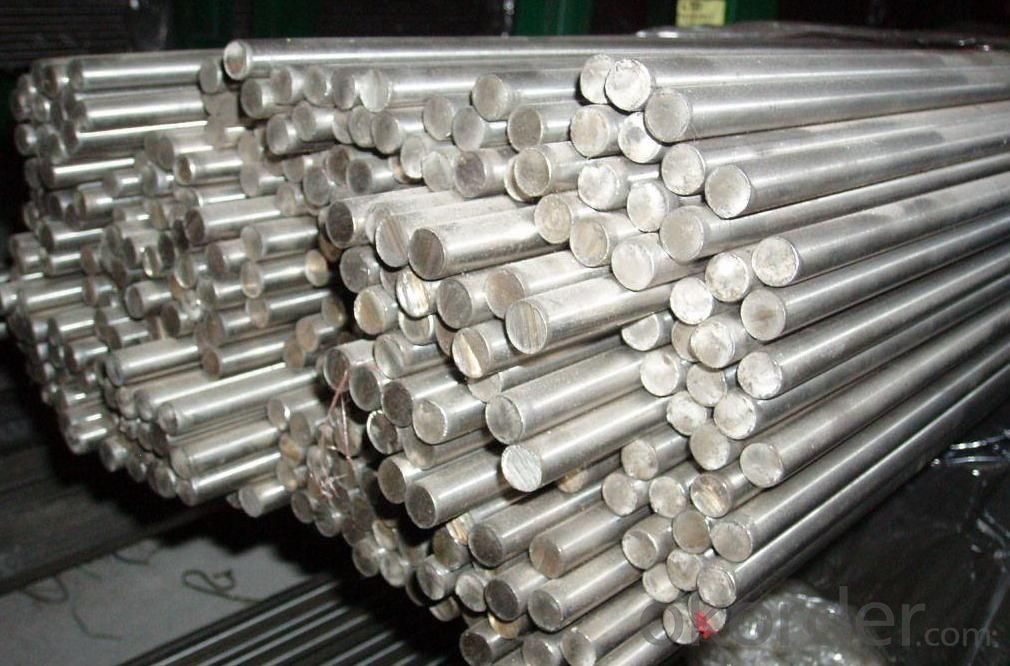
- Q:How does special steel compare to other materials such as aluminum or titanium?
- Special steel, when compared to other materials such as aluminum or titanium, offers a unique set of advantages and characteristics. Firstly, special steel is known for its exceptional strength and durability. It has a higher tensile strength compared to aluminum and titanium, making it ideal for applications that require withstanding heavy loads or high-stress environments. This strength also provides resistance against wear and tear, ensuring a longer lifespan of the material. Another significant advantage of special steel is its ability to maintain its mechanical properties at extreme temperatures. While aluminum and titanium may experience a significant decrease in strength at elevated temperatures, special steel retains its structural integrity, making it suitable for applications that involve high temperatures or thermal cycling. In terms of cost-effectiveness, special steel often proves to be more affordable than titanium, especially in large-scale production. Although aluminum is generally cheaper than special steel, it may not possess the same level of strength or resistance to corrosion, which could limit its applicability in certain industries. Moreover, special steel has excellent machinability and can be easily formed into different shapes and sizes, allowing for greater design flexibility. This quality makes it suitable for various industries such as automotive, aerospace, construction, and manufacturing, where complex components or structures are required. Lastly, special steel exhibits superior corrosion resistance compared to aluminum and titanium. It can be treated or coated to provide additional protection against rust and other forms of degradation, extending its lifespan even further. In summary, special steel outperforms aluminum and titanium in terms of strength, durability, temperature resistance, and corrosion resistance. Its cost-effectiveness, machinability, and versatility make it a preferred material in various industries, where high-performance and reliability are crucial factors.
- Q:What are the different methods for improving the impact resistance of special steel?
- There are several methods available for improving the impact resistance of special steel. These methods can be broadly categorized into heat treatment, alloying, and surface treatments. 1. Heat Treatment: One of the most common methods for improving impact resistance is heat treatment. This involves subjecting the steel to controlled heating and cooling processes to alter its microstructure. The two main heat treatment processes used for improving impact resistance are tempering and quenching. Tempering involves heating the steel to a specific temperature and then cooling it slowly. This process helps to relieve internal stresses and improve toughness. Quenching, on the other hand, involves rapidly cooling the steel after heating it to a high temperature. This process results in a hardened microstructure, enhancing the impact resistance. 2. Alloying: Another method for improving the impact resistance of special steel is through alloying. By adding certain elements to the base steel, the properties can be enhanced. For example, adding elements such as manganese, nickel, or chromium can improve the toughness and impact resistance of the steel. These alloying elements alter the steel's microstructure, resulting in increased strength and resistance to deformation. 3. Surface Treatments: Surface treatments are used to improve the impact resistance of special steel by providing a protective layer on the surface. One commonly used surface treatment is case hardening, which involves introducing carbon or nitrogen into the surface layer of the steel. This process creates a hard outer layer while retaining a tough core, enhancing the impact resistance. Another surface treatment method is shot peening, which involves bombarding the steel surface with small metal or ceramic particles under high pressure. This process induces compressive stresses in the surface layer, improving the fatigue resistance and impact resistance of the steel. In conclusion, the different methods for improving the impact resistance of special steel include heat treatment, alloying, and surface treatments. These methods can be employed individually or in combination to enhance the mechanical properties of the steel, making it more resistant to impact and deformation.
- Q:What are the requirements for special steel used in automotive parts manufacturing?
- To ensure superior performance, safety, and durability of vehicles, specific and crucial requirements must be met for the special steel used in automotive parts manufacturing. Here, we outline some key requirements for this special steel: 1. The special steel used in automotive parts must possess high strength and hardness to withstand the extreme stresses and loads experienced by automotive components. This ensures that the parts can endure heavy usage, resist deformation, and avoid failure under demanding conditions. 2. In addition to strength and hardness, the special steel must also exhibit good ductility and toughness. Ductility allows for the formation and shaping of intricate automotive parts, while toughness ensures that the parts can absorb energy and resist fracture or cracking upon impact. 3. Automotive parts are constantly exposed to various environmental conditions, such as moisture, humidity, and road salts. Therefore, the special steel used in these parts must exhibit excellent corrosion resistance to prevent rust and deterioration, thereby increasing the longevity and reliability of the parts. 4. As automotive parts are often assembled through welding processes, it is essential for the special steel to have good weldability. This allows for efficient and secure joining of different components, ensuring structural integrity and minimizing the risk of weld defects. 5. The special steel used in automotive parts manufacturing should have sufficient heat resistance to withstand high temperatures generated during engine operation, friction, or other thermal processes. This ensures that the steel maintains its mechanical properties even under extreme heat conditions, preventing premature failure or deformation. 6. Automotive parts are subjected to repeated loading and unloading cycles, which can lead to fatigue failure if the steel does not have adequate fatigue strength. Therefore, the special steel should possess high fatigue strength to withstand cyclic loading and resist fatigue cracks, enhancing the durability and reliability of the parts. 7. Automotive parts need to maintain their shape and dimensions over time to ensure proper fit and functionality. Therefore, the special steel used in manufacturing should exhibit dimensional stability, minimizing any warping or distortion during heat treatment or operational conditions. 8. While meeting all these requirements, the special steel should also be cost-effective for automotive parts manufacturing. This means that the steel should be reasonably priced, readily available, and offer a good balance between cost and performance. Meeting these requirements is crucial for manufacturers to produce high-quality automotive parts that meet industry standards, perform optimally, and contribute to the overall safety and performance of vehicles.
- Q:What are the main industries that use special steel?
- The main industries that use special steel include automotive, aerospace, construction, energy, machinery, and tool manufacturing.
- Q:How does the addition of nickel enhance the properties of special steel?
- The addition of nickel enhances the properties of special steel by improving its strength, toughness, and corrosion resistance. Nickel forms a solid solution with iron, which increases the overall strength and hardness of the steel. It also enhances the toughness, making it more resistant to cracking and fractures. Additionally, nickel improves the corrosion resistance of special steel, making it suitable for applications in aggressive environments or industries such as marine, chemical, and oil and gas.
- Q:What are the common challenges in casting special steel?
- The casting of special steel comes with various challenges due to its unique properties and composition. Some common challenges associated with casting special steel include the following: 1. High melting point: Special steels often possess higher melting points compared to regular carbon steels. This necessitates the utilization of specialized equipment and techniques to achieve the required casting temperature. 2. Alloying elements: Special steels frequently contain alloying elements like chromium, nickel, molybdenum, or vanadium. These elements enhance the properties of the steel but can also complicate the casting process. Proper control and understanding of these alloying elements are crucial to ensure the desired mechanical properties in the final product. 3. Oxidation and decarburization: During the casting process, special steel is susceptible to oxidation and decarburization. The exposure to oxygen and high temperatures can lead to surface defects and carbon loss, which can compromise the strength and hardness of the steel. Precise control of casting parameters, such as atmosphere and mold design, is necessary to minimize these issues. 4. Shrinkage and porosity: Special steels often exhibit a higher shrinkage rate during solidification compared to regular steels. This can result in shrinkage defects and porosity within the castings. Appropriate gating and riser design, along with the use of suitable feeding systems, are critical to mitigating these issues and ensuring sound castings. 5. Thermal stresses: Special steels may display higher thermal expansion coefficients, leading to significant thermal stresses during cooling and solidification. These stresses can cause cracking and distortion in the castings. Proper design considerations, such as the use of chills or controlled cooling techniques, are essential to minimize thermal stress and maintain dimensional stability. 6. Machinability: Special steels, especially those with high alloy content, can be challenging to machine due to their hardness and toughness. Casting defects like inclusions, segregations, or non-uniform microstructure can further complicate the machining process. Appropriate selection of cutting tools and machining parameters is necessary to achieve the desired dimensional accuracy and surface finish. In conclusion, casting special steel presents a range of challenges related to high melting points, alloying elements, oxidation, shrinkage, porosity, thermal stresses, and machinability. Overcoming these challenges requires a comprehensive understanding of material properties, precise process control, and the implementation of suitable casting techniques.
- Q:What are the different casting techniques used for special steel?
- There are several casting techniques used for special steel, including investment casting, sand casting, centrifugal casting, and continuous casting. Each technique has its own advantages and is suitable for specific applications. Investment casting is known for its precision and ability to produce intricate shapes, while sand casting is cost-effective and versatile. Centrifugal casting is used to create cylindrical shapes with high strength, and continuous casting is employed for mass production of steel products.
- Q:How is special steel used in the production of hydraulic components?
- Special steel is used in the production of hydraulic components due to its high strength, durability, and corrosion resistance properties. It allows for the manufacturing of hydraulic parts that can withstand high pressure, extreme temperatures, and harsh operating conditions. The use of special steel ensures the longevity and reliability of hydraulic components, making them suitable for various industries such as automotive, aerospace, and manufacturing.
- Q:How does special steel perform in electrical applications?
- Special steel, known as electrical steel, is purposely created and produced to meet the specific needs of electrical applications. It displays outstanding magnetic properties, rendering it highly suitable for utilization in electrical machines and devices. A primary feature of special steel is its diminished electrical resistivity, enabling efficient current flow and minimizing energy losses in electrical circuits. This reduced resistivity is achieved through precise control of the steel's composition and microstructure. Moreover, special steel possesses a high magnetic permeability, allowing for easy magnetization and demagnetization. This characteristic is crucial for the effective functioning of electrical machines such as transformers, motors, and generators. Additionally, special steel exhibits low coercivity, making it susceptible to magnetization or demagnetization with relatively low levels of magnetic field strength. This attribute proves advantageous in applications requiring rapid and precise magnetic switching, like electric transformers. Furthermore, special steel demonstrates minimal hysteresis loss, which pertains to the dissipation of energy as heat during magnetization and demagnetization cycles. This quality guarantees minimal energy losses in electrical devices, ultimately improving overall efficiency. To summarize, special steel excels in electrical applications due to its low electrical resistivity, high magnetic permeability, low coercivity, and low hysteresis loss. These properties establish it as an ideal choice for a wide range of electrical machines and devices, enhancing their efficiency and reliability.
- Q:How is special steel used in the aerospace sector?
- Special steel is used in the aerospace sector for various applications such as manufacturing engine components, landing gear, and structural parts. Its high strength-to-weight ratio, corrosion resistance, and ability to withstand extreme temperatures make it ideal for enhancing the performance, durability, and safety of aircraft.
1. Manufacturer Overview |
|
|---|---|
| Location | |
| Year Established | |
| Annual Output Value | |
| Main Markets | |
| Company Certifications | |
2. Manufacturer Certificates |
|
|---|---|
| a) Certification Name | |
| Range | |
| Reference | |
| Validity Period | |
3. Manufacturer Capability |
|
|---|---|
| a)Trade Capacity | |
| Nearest Port | |
| Export Percentage | |
| No.of Employees in Trade Department | |
| Language Spoken: | |
| b)Factory Information | |
| Factory Size: | |
| No. of Production Lines | |
| Contract Manufacturing | |
| Product Price Range | |
Send your message to us
ASTM 1065 Alloy Cold Drawn Steel Round Bar
- Loading Port:
- Tianjin
- Payment Terms:
- TT OR LC
- Min Order Qty:
- 25 m.t.
- Supply Capability:
- 50000 m.t./month
OKorder Service Pledge
OKorder Financial Service
Similar products
New products
Hot products
Related keywords
